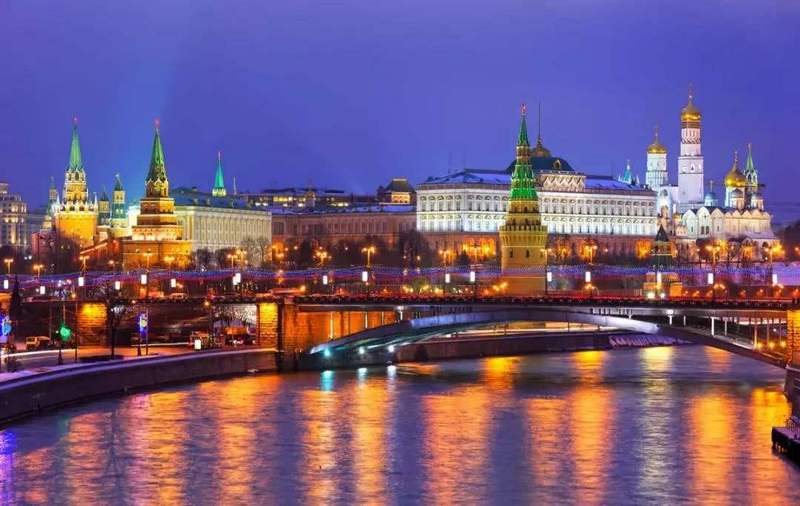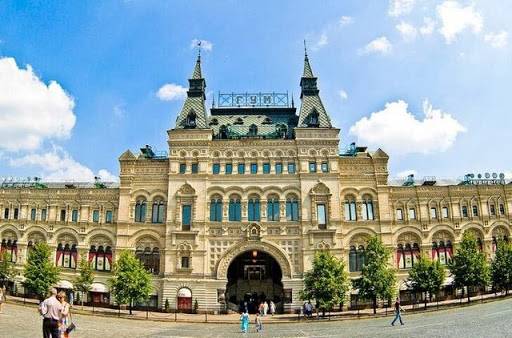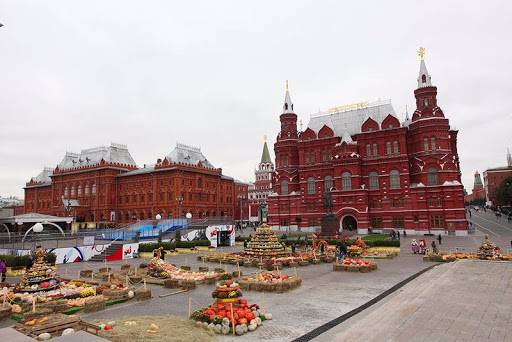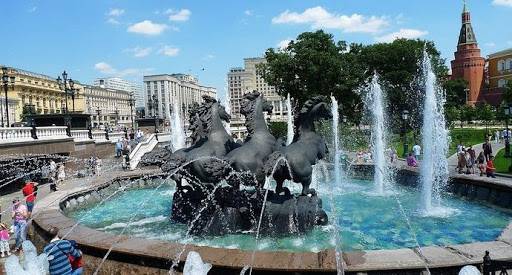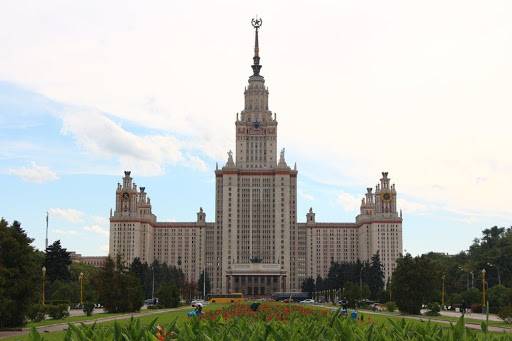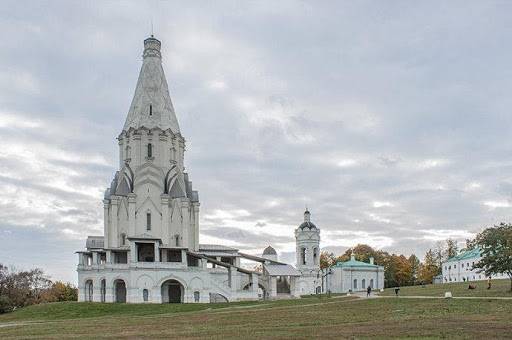Red Square, unsurprisingly, ranks first! How can you say you've been to Moscow without visiting Red Square?! Red Square is not very large, covering an area of 91,000 square meters, about 1/5 the size of Tiananmen Square. The ground of Red Square is unique, paved with cobblestones, giving it an ancient and sacred feel. In the center of the square is the solemn and majestic Lenin Mausoleum, surrounded by many famous buildings: the Kremlin, representing the power center of the Tsarist Empire and the former Soviet Union; St. Basil's Cathedral, considered the most classic symbol of Moscow; the bronze statue of patriotic heroes Minin and Pozharsky; the State Historical Museum, built in the 19th century with red bricks and distinct Russian style; GUM, one of the world's top ten department stores with over 100 years of history; and the statue of Marshal Zhukov, a hero of World War II, erected to commemorate the 50th anniversary of the victory in World War II. Standing in Red Square and seeing all of this is completely free!
GUM Department Store
GUM, located on the east side of Red Square, behind the Kremlin, is one of the world's top ten famous shopping malls. On December 2, 1893, Alexander III personally inaugurated GUM. However, the current GUM is not the same as it was over 120 years ago; it was renovated in 1953 on the original site. GUM has three floors and features a European classical style, resembling a palace. With a business area of about 80,000 square meters, GUM blends seamlessly with the surrounding architecture, adding a touch of elegance.
Manezhnaya Square is located in front of the State Historical Museum in Moscow. It is a place loved by both citizens and tourists. 'Manezh' in Russian means horse riding and horse training. The Central Exhibition Hall, located on the west side of the square, used to be a riding arena, and people started calling this place 'Manezh'. The building of the Central Exhibition Hall was constructed in 1817 and was originally a place for court officers to practice equestrian skills. Later, it was converted into an exhibition hall.
Alexander Garden, often regarded as the backyard of the Kremlin, is a rectangular park outside the red walls of the Kremlin, approximately 900 meters long and 150 meters wide. The garden is named after Tsar Alexander I of Russia and was built in 1821, serving as a royal garden ever since. The garden is filled with blooming flowers and lush greenery, making it a beloved leisure spot for Muscovites. Manezhnaya Square and its underground mall are seamlessly integrated with the garden, with fountains and sculptures visible everywhere.
Sparrow Hills Observation Deck
The Sparrow Hills Observation Deck is located at the highest point of Sparrow Hills (formerly known as 'Lenin Hills') in Moscow, with the main building of Moscow State University behind it and the Moscow River flowing gently at its feet. On a clear day, you can take in the beautiful scenery of Moscow from the observation deck: the main building of Moscow State University—one of the 'Seven Sisters' of Stalinist architecture; Luzhniki Stadium—the main venue for the 2018 World Cup, where the grand opening ceremony and exciting final will be held; the Kremlin—the most classic architectural complex in Russia; the Cathedral of Christ the Savior—the most typical representative of Russian Orthodox churches, and more.
Moscow Metro
The Moscow Metro has long been recognized as the most beautiful metro in the world, with station buildings of various designs that are both luxurious and elegant. Each metro station is designed by different architects and often uses marble, granite, ceramics, and stained glass to inlay various reliefs, carvings, and murals. The lighting fixtures are very distinctive, resembling magnificent palaces, earning it the reputation of an 'underground art palace.' The luxurious and elegant Moscow Metro has always been a source of pride for Russians. Every trip feels like a baptism of beauty. Although the metro charges a fare, a 6-ruble ticket allows you to 'tour' for half a day, making it almost free.
Kolomenskoye Estate
Kolomenskoye Estate is a nature reserve located south of the Kremlin, spanning both sides of the Moscow River, covering a vast area of 345 hectares. In the 14th century, it was the summer residence of Grand Prince Ivan of Moscow and the Russian Tsars. Since the 16th century, many emperors, such as Ivan the Terrible and Peter the Great, have built villas here.
Tsaritsyno Nature Reserve
Tsaritsyno Nature Reserve is located in the southeast of Moscow. In the 18th century, Russian Empress Catherine II, tired of the Kolomenskoye Estate, ordered the construction of Tsaritsyno, intending for the new palace to replace Kolomenskoye as the royal summer residence. At that time, Tsaritsyno was also known as the 'Empress's Village,' and it houses the largest Gothic palace complex in Russia.
Zaryadye Park is located in the heart of Moscow, just a stone's throw away from the Kremlin. Covering an area of 13 hectares, construction began in 2014 and was completed by the end of August 2017. The park officially opened on September 9th, during the celebration of Moscow's 870th anniversary, with Russian President Putin and Moscow Mayor Sobyanin attending the opening ceremony. On September 11th, the park welcomed its first visitors. Zaryadye Park is the most magnificent garden architectural complex built in Moscow in nearly 70 years, with a construction area of 78,000 square meters and a capacity to accommodate 15,000 visitors simultaneously. The park's design concept is modern and innovative, seamlessly integrating elements of the natural world with urban life, showcasing the unique ingenuity of its designers. This park is far more than words can describe; to truly appreciate its beauty and uniqueness, one must visit it in person!
